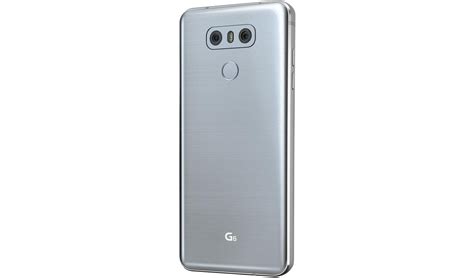The Quest for the All-in-One Gym Shoe
In today’s dynamic fitness landscape, many gym-goers juggle various training modalities within a single week – often within the same workout session. One moment you might be bracing for a heavy deadlift, and the next, you’re explosively jumping through burpees in a High-Intensity Interval Training (HIIT) circuit. This diverse demand places a unique challenge on footwear: finding a shoe that can offer the stable foundation crucial for lifting, alongside the flexibility and cushioning needed for explosive, agile movements, all while mitigating the risk of injury.
The wrong shoe can not only hinder performance but significantly increase your susceptibility to injuries ranging from ankle sprains and knee pain to plantar fasciitis. A dedicated weightlifting shoe provides immense stability but is impractical for jumping. A highly cushioned running shoe might feel great for sprints but lacks the ground feel and lateral support for lifting. The goal is to identify that sweet spot – a versatile gym shoe that excels in both worlds.
What Makes a Gym Shoe Versatile?
A truly versatile gym shoe for both lifting and HIIT must strike a delicate balance of several key features:
- Stability: For lifting, a wide, flat, and firm sole provides a solid base, preventing energy loss and offering crucial support for heavy loads. Minimal heel-to-toe drop (or a very slight one) is often preferred for compound lifts.
- Flexibility & Agility: HIIT demands shoes that allow for natural foot movement, quick changes in direction, and explosive jumps. This requires a flexible forefoot and sufficient responsiveness.
- Cushioning: While not overly plush like a running shoe, there needs to be enough responsive cushioning to absorb impact during jumps and runs, protecting joints without compromising stability.
- Grip: A robust, multi-directional outsole pattern is essential to prevent slipping during dynamic movements and provide traction during heavy lifts.
- Durability: Gym shoes endure significant wear and tear from rope climbs, box jumps, and abrasive gym floors. The materials and construction must be robust.
- Lateral Support: Side-to-side movements in HIIT require good lockdown and lateral stability to prevent the foot from rolling or sliding within the shoe.

Top Picks for Lifting and HIIT
While no shoe is truly perfect for every single exercise, several models have risen to prominence as excellent all-rounders, designed specifically for the varied demands of cross-training environments:
Nike Metcon Series
Often considered the benchmark for cross-training, Nike Metcons are engineered for stability in lifting with a wide, flat base and a firm heel. Yet, they incorporate enough flexibility in the forefoot and responsive cushioning to handle plyometrics, short runs, and agility drills. They feature excellent lateral support and durable materials for rope climbs and burpees.
Reebok Nano Series
The Reebok Nanos are another industry leader, known for their robust construction and broad appeal. They offer a strong, stable platform for lifting, often with a minimal heel drop, combined with a flexible and responsive forefoot. The aggressive outsole provides excellent grip, and the durable upper can withstand intense workouts. Newer iterations often focus on improved comfort for more dynamic movements.

inov-8 F-Lite/Bare-XF Series
For those who prefer a more minimalist or “barefoot” feel, inov-8 offers shoes like the F-Lite or Bare-XF series. These shoes emphasize ground feel, flexibility, and a very low or zero drop, which is excellent for stability in lifting. While they offer less cushioning, their responsiveness and grip are superb for agile HIIT movements, provided you have adapted to a minimalist approach.

Balancing Stability for Lifts, Flexibility for HIIT
The core challenge in shoe design for versatility lies in balancing rigidity and flexibility. For lifting, especially compound movements like squats and deadlifts, you want a shoe that provides maximal ground contact, preventing energy dissipation through a soft, compressible sole. This means a firm midsole and often a minimal heel drop (0-4mm) for optimal biomechanics.
Conversely, HIIT involves a lot of jumping, running, and rapid changes of direction. Here, flexibility in the forefoot is paramount for propulsion, and some degree of responsive cushioning is vital to absorb impact and protect joints. Lateral stability features, such as reinforced sidewalls or outriggers, become critical to prevent ankle rolls during quick cuts. The best versatile shoes manage to integrate these seemingly opposing requirements through clever material engineering and design.

Preventing Injury: The Role of Your Shoes
Wearing inappropriate footwear is a significant, yet often overlooked, contributor to gym-related injuries. A running shoe with high cushioning can lead to instability during heavy squats, potentially causing knee or ankle sprains. A shoe that lacks sufficient grip can cause slips during box jumps or burpees. Poor lateral support can result in ankle rolls during agility drills.
Investing in a high-quality, versatile gym shoe specifically designed for multi-modal training provides the foundational support needed to execute movements safely and effectively. It allows your foot to function optimally, absorbs impact when necessary, and provides a stable platform, thereby reducing stress on your joints, ligaments, and tendons.
Making Your Final Decision
When selecting your versatile gym shoes, consider your primary activities and personal preferences. While the Metcons and Nanos are excellent starting points, trying them on is crucial. Pay attention to the fit – not too tight, not too loose, with enough room for your toes to splay, especially during lifts. Walk, jump, and even do a few air squats in them to gauge their performance. Remember, the best shoe is the one that feels right and supports your specific training needs, ultimately helping you perform better and stay injury-free.





